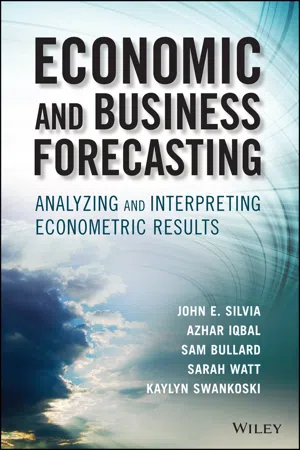Chapter 1
Creating Harmony Out of Noisy Data
By the spring of 2012, the economic performance of the United States was operating at a much different pace from what many analysts had expected. Decision makers in both private and public sectors faced a set of mixed and unclear economic and financial indicators that offered a confused picture of the state of the economic recovery, the pace of that recovery, and the character of the structural challenges facing the economy.
Three major trends characterized the confusion. First, top-line economic growth had been unusually low and uneven relative to past economic recoveries since World War II. During the recovery, the economy accelerated after an initial stimulus but then lost momentum as the stimulus generated no follow-on growth. Decision makers had the difficult challenge of identifying what the true trend in the economy was and what the cycle around that trend was. Had trend economic growth downshifted in the United States?
Second, job growth had become the number one political issue. But the lack of job growth appeared out of line with traditional economic models on a cyclical basis. Further, weak job growth intimated a sharp structural break in both private and public sector decision makers’ preconceived understanding of the relationship between employment and population growth. Had there been a structural break between employment and population growth, and/or between employment and output growth? Why have exceptionally low mortgage interest rates not spurred a pickup in housing, as in prior recoveries? Had this relationship experienced a structural break as well?
Third, corporate profits, business equipment spending, and industrial production had improved in this cycle in a way reminiscent of prior recoveries despite the overall perception that the economic recovery had been subpar. How can we identify economic series that appear to be behaving in typical cyclical fashion compared to those that are not?
In this book, we test whether certain series, such as output, employment, profits, and interest rates, exhibit a steady pace of growth over time, or if that pace has drifted. In statistical terms, is the series stationary or not? If not, then oft-used statistical tools cannot be employed to evaluate the behavior of an economic series without introducing statistical bias.
To address these issues effectively, we examine many economic and business series and pursue alternative statistical approaches to make effective decisions based on the application of simple economic and statistical methods. Our work here is in contrast to two common approaches: econometric-only approaches or economic theory-only approaches. Our work returns to an earlier tradition of applied research rather than mathematical elegance, which is an alternative to econometrics that uses all technique with little to no real-world application or all-theory approaches with no technique and only hypotheses about the real world.
EFFECTIVE DECISION MAKING: CHARACTERIZE THE DATA
The first task for many analysts is to characterize the behavior of a particular time series. For example, is there a cyclical component to the data? Many economic data series show some cyclicality, but, alternatively, some are driven more by secular changes in our economy—for example, the labor force participation rate trended steadily higher between the early 1960s and late 1990s as women joined the workforce. Yet often a time series, such as employment, is influenced by both cyclical and secular factors, where the cyclical element may change the pace but not derail longer-term secular shifts in the economy.
If a time series does display a cyclical component, how does it behave as we move through the business cycle? Does the data in the time series decline when the economy is in a recession, or is it countercyclical and increase during a recession, such as the saving rate for households? How distinguishable are turning points in the series? If the series is volatile on a period-to-period basis, a large move in one direction or another may not be enough to signify a turning point, but instead care must be taken with a few recent data points in order to smooth out any volatility and distinguish the true trend. Moreover, do turning points in the time series lead or lag those of other series? Is the time series linear or nonlinear over the period of study?
Part IA: Identifying Trend in a Time Series: GDP and Public Deficits
Throughout the recovery from the Great Recession of 2007 to 2009, the pace of economic growth has been below par, and public sector deficits have persisted. This has led to a greater problem of public debt than many policy makers anticipated when the recovery began. Today, perceptions of the effectiveness of fiscal policy actions and the competitiveness of the U.S. economy have been brought into question. Both are critically dependent on the estimates of the underlying trend in essential economic variables like growth, inflation, interest rates, corporate profits, and the dollar exchange rate as well as other financial variables. For example, one key issue since the recession of 2007 to 2009 has been to identify the trend pace of economic growth, which, in turn, reflects the influence of underlying economic forces, such as productivity growth and labor force participation. Identifying the trend of these series helps to characterize the pattern of sustainable federal, state, and local revenues that will make for better budgeting in government and help guide policy makers over time.
The question is: What is the trend pace of economic growth, and has that pace downshifted in the United States over recent years? This issue is critical at both federal and state levels of government as well as for the strategic vision of private sector firms when they estimate their top-line revenue growth. Trend growth in the United States is a primary driver of tax revenues and thereby influences the outlook for budget deficits—a key focus of p...
